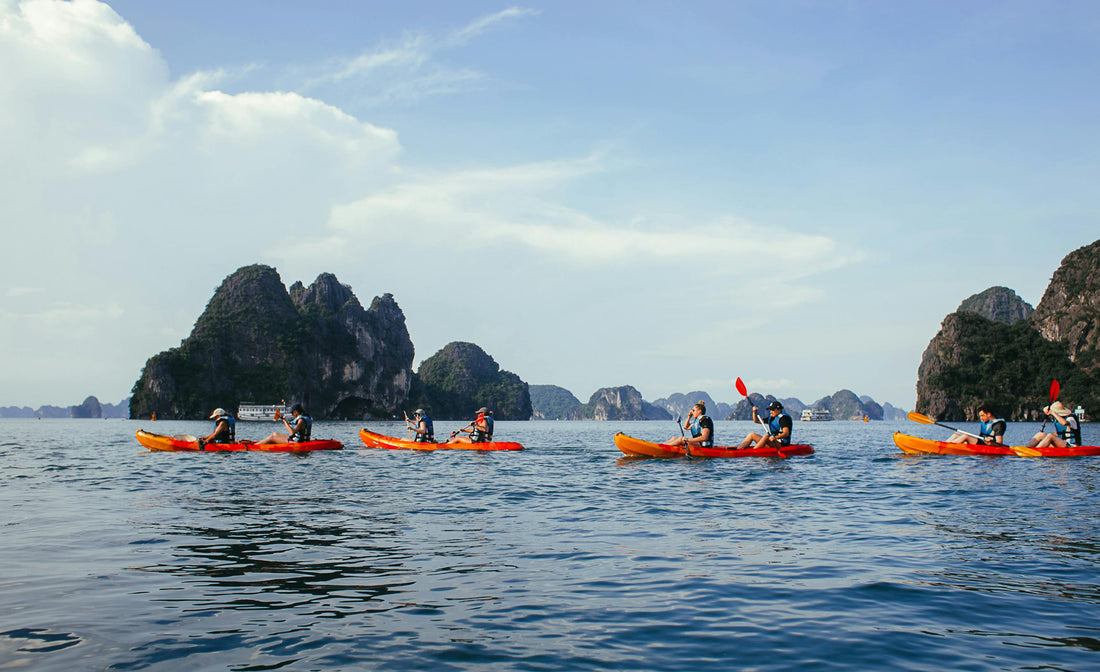Kayaking, a water sport that has captured the hearts of adventure enthusiasts worldwide, has a rich and fascinating history that spans centuries. From its ancient roots to the modern, adrenaline-fueled competitions, kayaking has evolved into a diverse and popular activity. In this comprehensive exploration, we delve into the annals of kayaking history, tracing its journey through time, innovation, and cultural significance.
Ancient Origins:
The origins of kayaking can be traced back thousands of years to Arctic regions where indigenous peoples relied on small, sleek watercraft for hunting and transportation. The Inuit and Aleut tribes of the Arctic are credited with the invention of the kayak, crafting these versatile boats from sealskin stretched over a frame of driftwood or whalebone. These early kayaks were essential tools for survival in harsh, icy environments, enabling hunters to navigate icy waters silently and efficiently.
European Encounters:
As European explorers ventured into the Arctic in the 18th century, they encountered these ingenious watercraft and marveled at their design and functionality. The concept of kayaking slowly made its way into European consciousness, but it was initially seen as a novelty rather than a practical means of transportation.
19th Century Developments:
The 19th century witnessed a shift in perception as kayaking began to gain popularity as a recreational activity in Europe. The design of the kayak underwent modifications, incorporating materials such as canvas and wood. Sporting clubs emerged, promoting kayaking as a leisure pursuit for the adventurous elite.
The Rise of Competitions:
The early 20th century saw the formalization of kayaking as a competitive sport. The first kayak competitions took place in Europe, with Germany hosting the inaugural event in 1936. Paddlers began to explore rivers and rapids, pushing the boundaries of the sport and developing specialized techniques for navigating challenging waters.
Post-War Expansion:
After World War II, kayaking gained momentum worldwide. The surplus of military equipment, particularly inflatable rafts and surplus kayaks, provided an accessible entry point for many individuals eager to try the sport. Kayaking clubs and organizations sprang up, fostering a sense of community and camaraderie among enthusiasts.
Evolution of Kayak Design:
The latter half of the 20th century witnessed significant advancements in kayak design and materials. Fiberglass, plastic, and composite materials replaced traditional materials, resulting in lighter and more durable kayaks. These innovations not only improved performance but also made kayaking more accessible to a broader audience.
Whitewater Kayaking:
One of the most exhilarating branches of kayaking, whitewater kayaking, emerged as paddlers sought more challenging environments. The sport's popularity soared as adrenaline junkies navigated turbulent rivers and cascading rapids, giving rise to a subculture of extreme kayaking.
Sea Kayaking and Expeditionary Paddling:
Simultaneously, sea kayaking gained prominence as enthusiasts explored coastal waters and embarked on long-distance expeditions. Sea kayaks, with their streamlined designs and enhanced stability, became popular for exploring diverse water bodies, from calm seas to challenging open ocean conditions.
Olympic Recognition:
The recognition of kayaking as an Olympic sport in 1936 marked a significant milestone in its history. Over the years, the sport has evolved with the addition of various disciplines, including sprint, slalom, and freestyle kayaking, showcasing the versatility of these watercraft in different environments.
Modern Trends and Technologies:
In the 21st century, technology has further influenced kayaking. High-performance materials, advanced manufacturing techniques, and innovative designs continue to shape the evolution of kayaks. Additionally, digital platforms and social media have connected the global kayaking community, allowing enthusiasts to share experiences, tips, and adventures.
Conclusion:
From its humble beginnings in the Arctic waters to the high-stakes competitions and adventurous expeditions of today, the history of kayaking is a testament to human ingenuity and the pursuit of adventure. As we paddle into the future, the story of kayaking continues to unfold, offering new challenges, innovations, and opportunities for exploration on the vast canvas of water that covers our planet.

